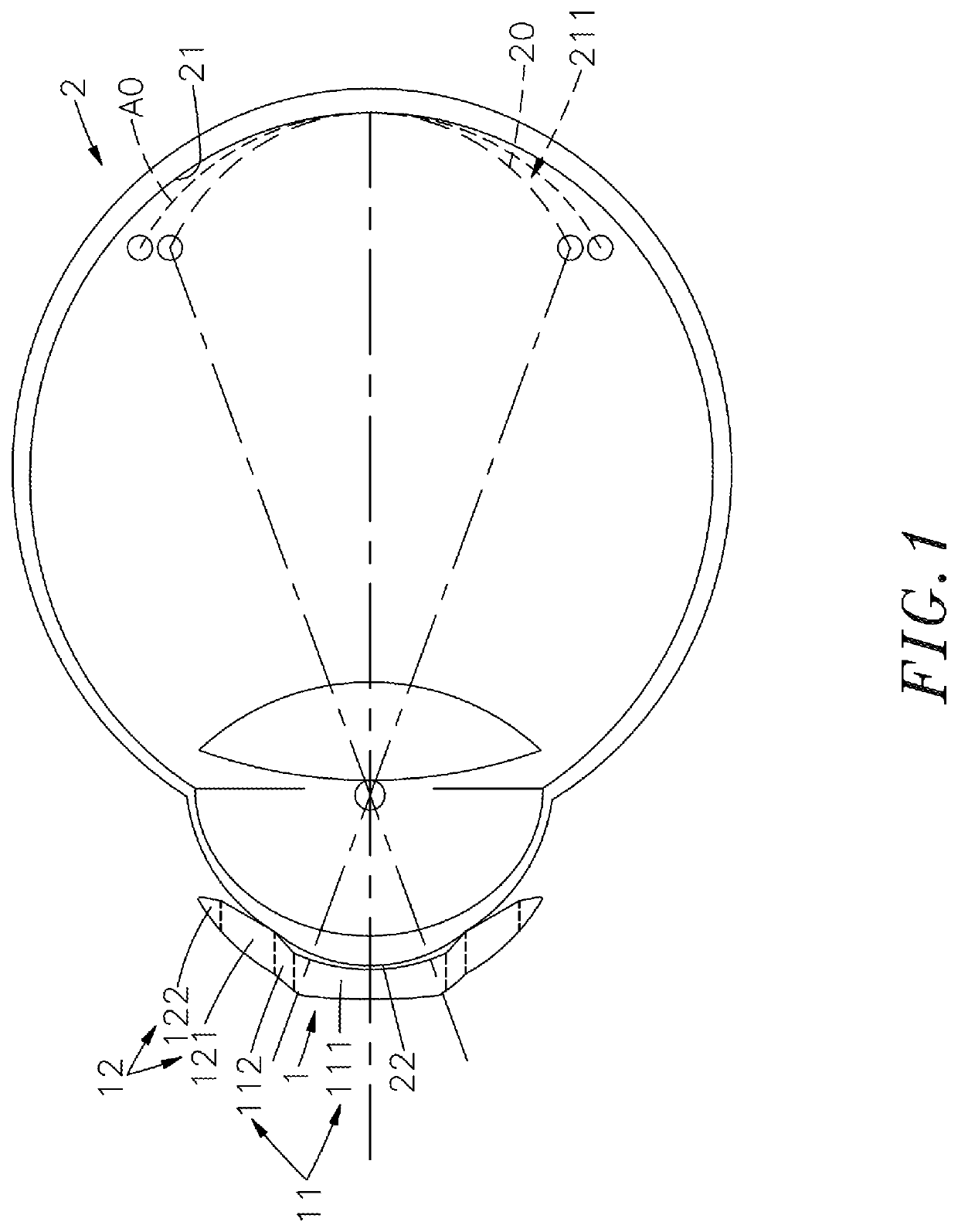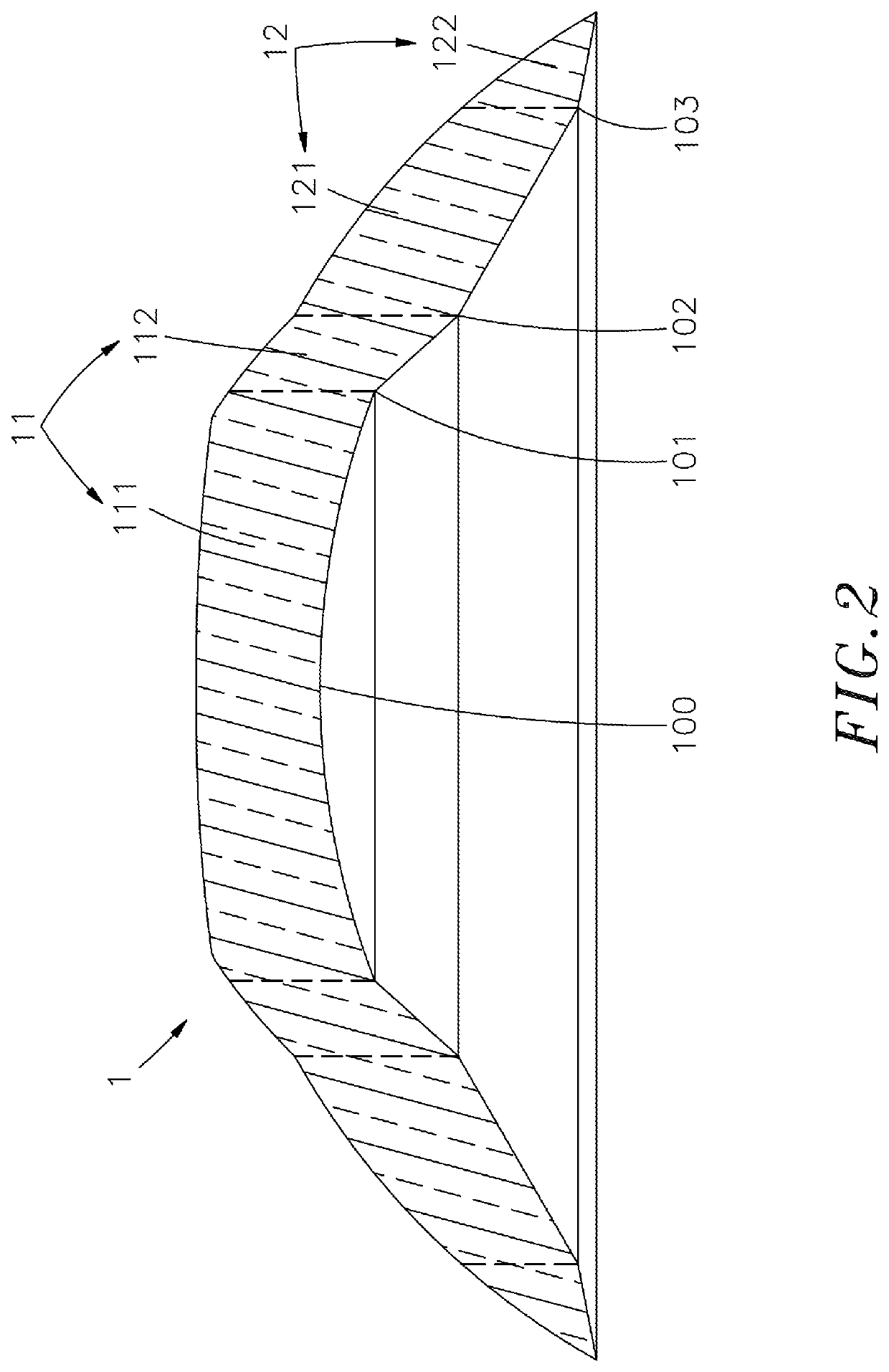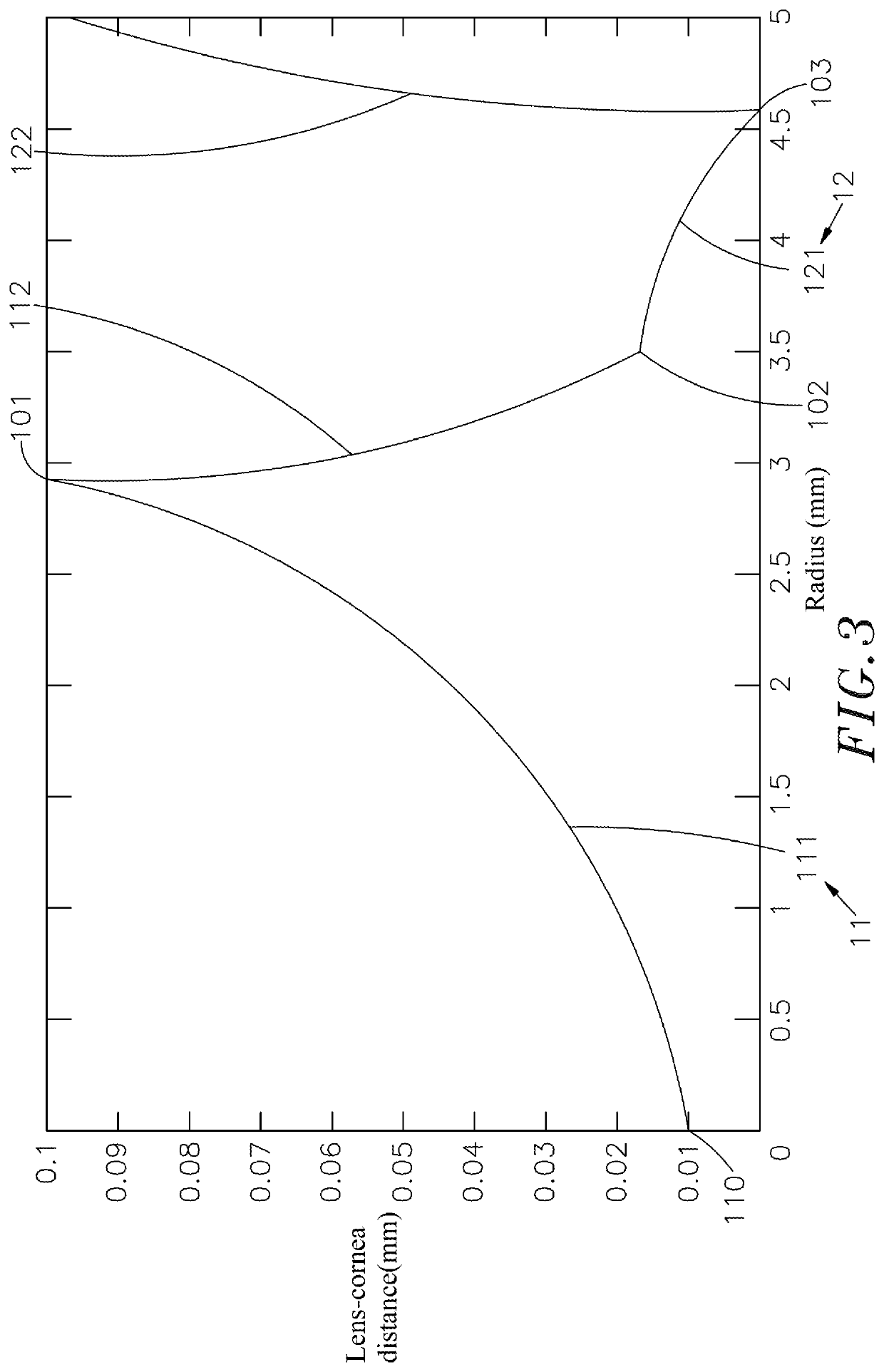Aspheric lens using e-value to control eye ball growth rate
- Summary
- Abstract
- Description
- Claims
- Application Information
AI Technical Summary
Benefits of technology
Problems solved by technology
Method used
Image
Examples
Embodiment Construction
[0013]Referring to FIGS. 1, 2 and 3, as shown in the drawings, it can be clearly seen that the aspheric lens of the present invention uses E-value to control the eyeball growth rate. The lens 1 is an orthokeratology lens and the surface is aspheric. The lens 1 comprises a treatment zone 11 through which light passes to image at the retina 21 of the eyeball 2, and a positioning zone 12 of the non-visual area outside the treatment zone 11.
[0014]The treatment zone 11 comprises a base curve 111 (BC) whose eccentricity (E-value) can be between −4 and 4, and a reverse curve 112 (RC) formed on the outside of the base curve 111 to form a gap between the base curve 111 and the eyeball 2 for the accumulation of tears.
[0015]The positioning zone 12 comprises an alignment curve 121 that allows the lens 1 to be firmly fixed on the eyeball 2, and a peripheral curve 122 (PC) located outside the alignment curve 121.
[0016]The base curve 111 eccentricity of the treatment zone 11 of the lens 1 can be b...
PUM
 Login to View More
Login to View More Abstract
Description
Claims
Application Information
 Login to View More
Login to View More - R&D
- Intellectual Property
- Life Sciences
- Materials
- Tech Scout
- Unparalleled Data Quality
- Higher Quality Content
- 60% Fewer Hallucinations
Browse by: Latest US Patents, China's latest patents, Technical Efficacy Thesaurus, Application Domain, Technology Topic, Popular Technical Reports.
© 2025 PatSnap. All rights reserved.Legal|Privacy policy|Modern Slavery Act Transparency Statement|Sitemap|About US| Contact US: help@patsnap.com



